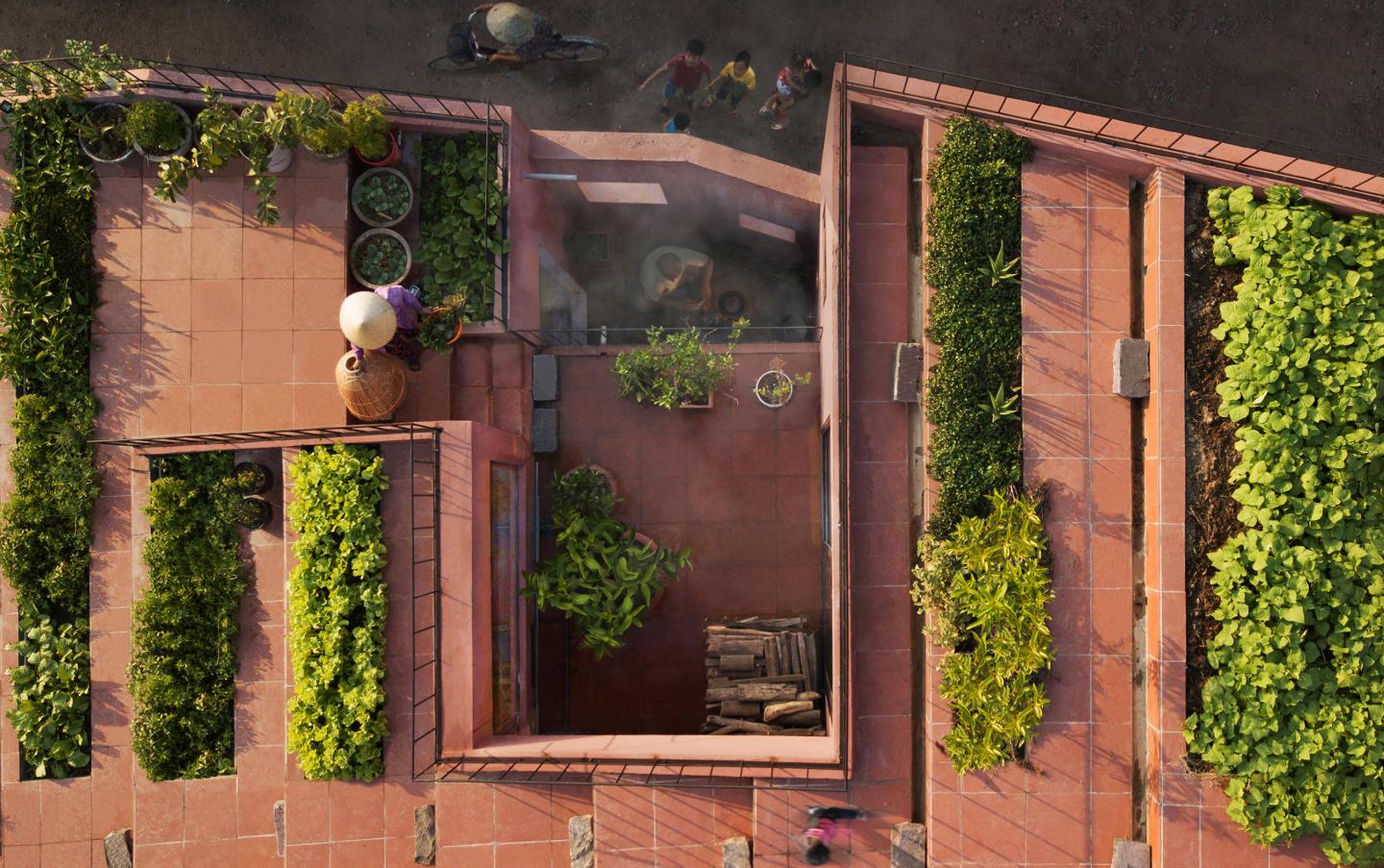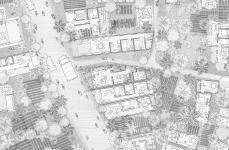Rural area in the context of rapid urbanism.
The project is a small house on an area of 80m2. The site is located on the main road of the village. Urbanization has changed the architecture and living space of this village. New houses with styles that one can easily find in big cities has disrupted their familiar landscape and lifestyle.
The house is meant for a married couple over 50s who has been living in this rural area since they were born. In search for a new appropriate typology for the context, we are convinced that adapting the new architecture based on the traditional cultural lifestyle of the couple is the most important task.
Vegetable garden, playground and connecting space.
Connecting with nature, daily activities are gardening, paddy drying, etc. Vegetable gardens and multi-purpose playgrounds become the soul of houses in this village.
Instead of having a large yard like other houses in the village, we create many courtyards with different heights, suitable for the height of the house structure. Rooftop garden is adjacent to the courtyard of the mezzanine floor, creating a playground & vegetable garden that connects from the roof to the ground floor.
Ecosystem.
The house is designed with a green covering structure of the roof, both cooling inside and reducing heat radiation to the environment.
Rooftop garden also have the role of providing fresh and available food for daily meals, the agricultural lifestyle is preserved and developed in parallel with urbanization.
The owner have shared their products with the neighbor families, unexpectedly, the architecture has been generating community social interactions in the village.
Energy saving.
With the solution of planting trees on the roof. Soil and vegetable have created insulation, moisturizing and cooling layers for the space below. In the tropical zone, the hot season can reach 40 degrees Celsius, but the inside temperature of the house decreases 8 degrees Celsius compared to the outside.
Combined with the 2-layer wall, there are ventilation openings on the wall and courtyards with natural lighting, so the house is always airy. The space and function of the house help the owner feel close to the life of a countryside, where associated with land, light, rain, trees and animals, ...
Rural architectural typology.
In Vietnamese traditional landscape, red terracotta-roof houses represented for a time of regional local architecture. However, now new multi-story houses with steel roofs seem to have lost the identity of village landscape.
The stair-step method reduces the height of façade, help urban space is not overwhelmed, and create a comfortable slope. This establishes the communication between the space on the roof and the space under the road. “The red roof” has the intent to keep, to store and remind the familiar rural lifestyle.
Replicability.
Preserving the agricultural & cultural lifestyle.
In the context of rapid urbanization, houses on the main roads in the villages have small plot area, not enough to contain garden space and agricultural activities. Therefore, the idea of agricultural garden and multi-purpose space on the roof is suitable for the context and lifestyle of people in this area.
Replicating this model and suiting individual needs with the creativity of each roof structure, the agricultural activities on the roof will create a unique and interesting culture of the region.
2018
2019
Name of project: The Red Roof
Office Credit: TAA Design
Office URL: http://taadesign.com/
Status: Built in 2019
Program: Private house
Location: Quang Ngai, Vietnam
Site area: 80 m2
GFA: 190 m2
Photographs: TAA Design
Principal Architect: Nguyen Van Thien
Design team: Nguyen Van Thien, Nguyen Huu Hau.
Favorited 2 times




















